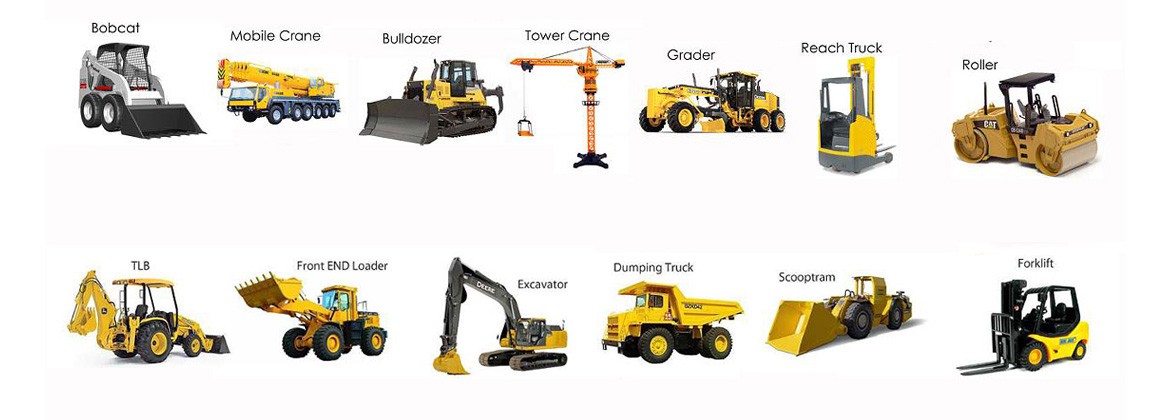Heavy Equipment Rental: High-Quality Equipment for Lease
Wiki Article
Renting Vs. Acquiring Building And Construction Tools: Making the Right Choice for Your Project
When starting a building task, one of the essential decisions that predict stakeholders and supervisors deal with is whether to purchase or lease building and construction equipment. Both choices have their benefits and drawbacks, making the choice a critical one in the project planning process. The decision rests on various aspects such as cost factors to consider, task period, devices maintenance, versatility, scalability, and threat management. Each element plays a vital role in figuring out the most appropriate path for the project's devices demands. boom lift rental. Let's explore these elements additionally to comprehend exactly how they influence the decision-making procedure and ultimately the success of the job.Price Factors To Consider
Renting out devices usually needs lower preliminary payments compared to purchasing, making it an eye-catching choice for short-term jobs or contractors with budget constraints. In the lengthy run, continually renting equipment can build up higher prices than acquiring, particularly for extended jobs.On the other hand, buying building and construction devices involves greater upfront prices however can lead to long-term financial savings, particularly for long-term jobs or frequent users. Owning devices supplies adaptability, comfort, and the capacity for resale value once the task is finished. In addition, possessing devices permits personalization and familiarity with certain machinery, possibly boosting efficiency and performance on-site. Eventually, the decision in between acquiring and renting construction equipment hinges on the job's period, frequency of usage, budget considerations, and lasting financial objectives.
Project Period

Conversely, for long-term jobs or continuous construction job, buying tools might be the a lot more cost-effective alternative. Investing in devices can lead to set you back savings in the future, particularly if the equipment will be often used. Additionally, possessing equipment supplies a sense of control over its schedule and enables for modification to fit details task needs.
:max_bytes(150000):strip_icc()/Balance_Must_Have_Earth_Moving_Construction_Heavy_Equipment_844586-c5b6ac9e5c074c11ad41e9acaea8f099.png)
Equipment Upkeep
Provided the essential role job duration plays in identifying one of the most cost-effective strategy between acquiring and leasing building tools, the focus now changes in the direction of analyzing the important element of equipment upkeep. Proper upkeep is important for ensuring the ideal performance and longevity of construction devices. Renting out devices commonly features the advantage of having actually well-maintained machinery offered by the rental firm. This can minimize the problem of upkeep jobs from the project proprietor or contractor, conserving time and initiative. On the various other hand, owning devices needs a proactive method to maintenance to stop malfunctions, make certain safety and security, and expand the devices's life-span. Normal evaluations, servicing, and timely repair services are essential to keep owned devices in leading functioning condition. Element in maintenance expenses when determining between purchasing and renting out, as neglecting upkeep can bring about expensive repair work, downtime, and job delays. Ultimately, a well-kept building equipment fleet, whether leased or remote control backhoe possessed, is necessary for the effective and reliable completion of construction jobs.Versatility and Scalability
In the world of construction tools administration, the facet of adaptability and scalability holds significant significance for task efficiency and source usage. Opting to lease building and construction devices supplies a high level of flexibility as it permits for the quick adjustment of equipment types and quantities based upon the evolving requirements of a job. Renting makes it possible for professionals to access a wide variety of specialized devices that may be required for details tasks without the lasting commitment of ownership. This versatility is specifically beneficial for projects with varying demands or unsure periods (boom lift rental).In addition, scalability, another vital factor, is inherently linked to versatility. Renting out building and construction tools offers the benefit of quickly scaling procedures up or down as job needs change. Professionals can swiftly trade or add devices to match the task's transforming needs without the constraints of having properties that might come to be underutilized or outdated. This capability to range sources efficiently can lead to price savings and boosted project timelines, making renting out a positive alternative for projects requiring versatility and receptive source allotment.
Threat Monitoring
Efficient threat monitoring in building tools operations is extremely important to ensuring job success and mitigating possible economic losses. Building projects inherently entail different threats, such as equipment failures, mishaps, and project delays, which can dramatically impact the task timeline and budget. By thoroughly taking into consideration the risks related to owning or renting out building devices, job managers can make educated decisions to reduce these prospective hazards.Renting building and construction equipment can provide a degree of threat reduction by moving the responsibility of repair and maintenance to the rental business. This can decrease the financial problem on the job owner in instance of unanticipated tools failings (aerial lift rental). In addition, renting provides the flexibility to access specialized tools for certain task phases, reducing the threat of owning underutilized machinery
On the various other hand, this content having building and construction tools provides a sense of control over its use and upkeep. Nonetheless, this additionally suggests bearing the full responsibility for fixings, upkeep prices, and depreciation, raising the economic dangers connected with tools possession. Careful danger assessment and consideration of elements such as job duration, equipment usage, and upkeep requirements are crucial in determining one of the most suitable choice for reliable risk management in building and construction jobs.
Conclusion
Finally, when making a decision between purchasing and renting out building and construction equipment, it is important to consider price, task duration, devices maintenance, flexibility, scalability, and threat administration. Each aspect plays an essential function in establishing the most ideal option for the task available. By carefully examining these facets, task supervisors can make an enlightened choice that aligns with their spending plan, timeline, and general project goals.
Report this wiki page